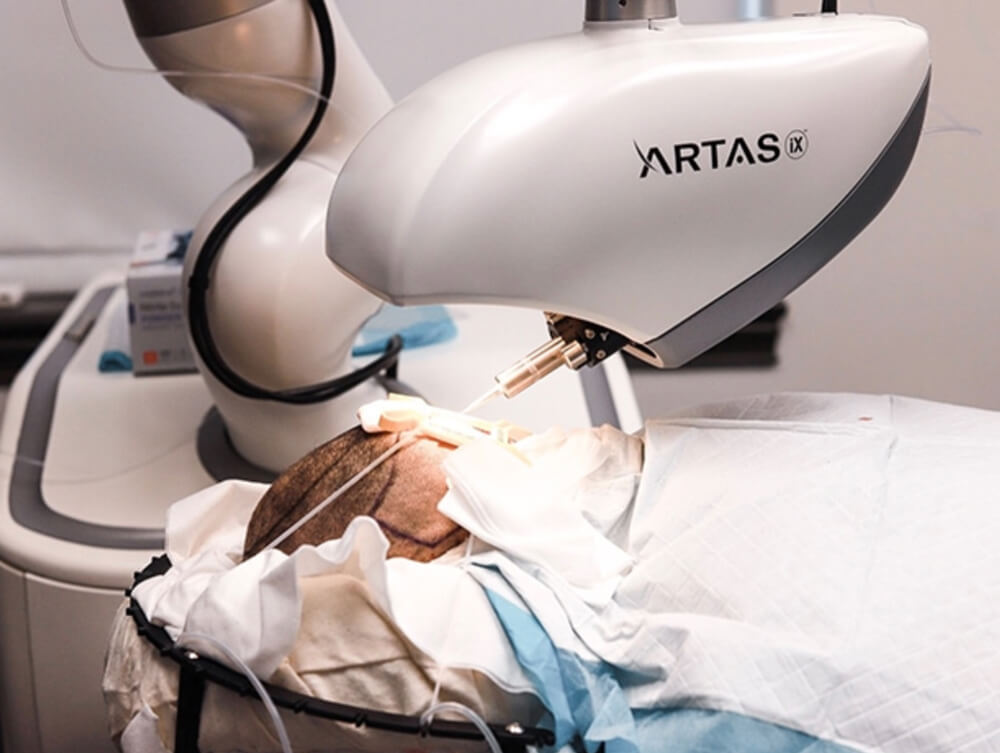With the way technology has advanced over the past few years, it may be easy to forget that cosmetic surgery procedures were once quite different than they are now. While you can safely rely on an ARTAS robot to perform your hair transplant alongside a plastic surgeon these days, that definitely wasn’t always the case. Take a look at the ways the hair transplant has evolved over the years.
The Early Years
The roots (no pun intended) of the hair transplant can be traced back to the 1800s, when physicians would rely on graft procedures and “scalp flaps”—the process of rerouting blood in your scalp to the balding area to promote hair growth, using a tight band—to help patients with their hair regrowth. This was a far cry from the elegance and precision of the ARTAS robot, but it was the best that many could expect until the 1950s when a young surgeon named Norman Orentreich would invent what we know today as the modern hair transplant. Many of the transplant techniques used to this very day are variations and enhancements of Dr. Orentreich’s innovation.
The Rise of the Micrograft
Hair transplant history took a massive turn during the 1980s, when B.L. Limmer introduced the idea of using stereo microscopes to perform the kinds of precise procedures that devices like the ARTAS robot now complete with such ease. Whereas previously, hair grafts tended to be noticeable and unsightly, the advent of micrografting gave physicians the flexibility to perform their surgeries with not only a greater level of precision, but with more ability to account for things like the thickness of hair and the angle on which the hair grows on the scalp. While it would still be some time yet before the practice of micrografting was completely perfected, this was certainly one of the most important developments in allowing for doctors to do the great work they complete with tools like the ARTAS robot in the modern day.
Paving the Way for ARTAS
All of these developments were crucial to allow ARTAS to come into being, which is something that all of our patients are quite thankful for indeed. By stripping away the busywork of the procedure by using precise programming to assist the doctor, the ARTAS robot has represented the next leap for hair transplant history since the moment it hit the market. And the best part is that there is still so much further to go!
Technology That is Constantly Developing
Perhaps the most exciting thing about all of this is that no one is sure just where the art of the hair transplant is headed next. Now that the ARTAS robot has realized the next stage of hair rejuvenation and given many people new confidence in their hair, the only place to go is up with regards to how this machine—and the ease and quality of hair transplants as a whole—can change the lives of the people who use it.
See What Salameh Skin Care and Plastic Surgery Can Do for You
The ARTAS robot is an incredible device, but it can only be as good as the plastic surgeon who is utilizing it. This is why Dr. Salameh is regarded across the world as one of the finest practitioners of cosmetic surgery: he has the skill to use every new technology that emerges in this field, and the attention and sensitivity to use these tools in the pursuit of getting his patients exactly what they want—whether he’s using an ARTAS robot or any of the other resources at our disposal. Booking an appointment with us is scheduling a procedure with professionals who value your wishes in regards to how you want to look, and we guarantee you will not be disappointed with the results.
To become a part of hair transplant history and get the vibrant head of hair you know you deserve, contact us today and ask us about our rates and availability. Our ARTAS robot can give you the appearance you have always wanted, and you will not find a more capable set of hands to guide it than the ones at Salameh Hair Transplant, so get in touch now!


